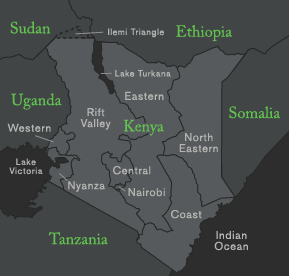
Up until recently, Kenya had come to represent one of the few beacons of light on a continent where good governance is often in short supply. But the violence that engulfed Kenya in the wake of the presidential election in December 2007 shattered the country's image as a stable, emerging democracy that could serve as a model for others in the region. Violence had marred the 1992 and 1997 elections, but the amount of media attention the country received during this latest crisis reflects Kenya's importance not only in Africa but also in the rest of the world.
In the wake of the official announcement that President Mwai Kibaki had won a second term, more than 1,000 lives were lost and an estimated 300,000 people were displaced. Beyond the unspeakable loss of human life, the crisis had a tremendous impact on Kenyans' attitudes, including their confidence in institutions and their overall sense of well-being.
The civil unrest also had far-reaching economic and social consequences as Kenya serves as a critical entry point for commercial goods (including food and fuel) as well as humanitarian operations, which many countries in the greater region need. Nairobi, Kenya's capital, is a hub, drawing residents from the Horn and East Africa for its healthcare and educational services, among others. The country's strategic location not only makes it an important player in the fight against terrorism but also a mediator during peace negotiations in an already tumultuous regional backyard. As a result, the country's unrest, in the post-election days of the violence, threatened to further destabilize the greater region.
The Dec. 27 elections, which pitted incumbent Kibaki from the Party of National Unity against Raila Odinga of the Orange Democratic Movement, were the closest since the return to multiparty politics in 1992. Just a few weeks before the election, Gallup conducted two pre-election polls of registered voters in Kenya. Findings from the first pre-election poll, which Gallup conducted between Oct. 25 and Nov. 10, 2007, showed that Kenyan voters were almost evenly split between the two top candidates. The second pre-election poll, which Gallup conducted between Dec. 5 and Dec.14, 2007, showed that Kibaki and Odinga were virtually tied. The Gallup pre-election poll findings suggested that whoever won the race would not have a mandate to govern, perhaps portending the horrific events to come.
As part of the World Poll project, Gallup has polled Kenyans for three consecutive years, starting in 2006. Over the next few weeks, we will analyze the poll results not only to help gauge the effect of the post-election violence on Kenyans' lives but also to shed light on how Kenyans think they can move forward.
-- by Magali Rheault and Bob Tortora